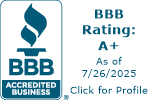MVQS Worker Trait Factor Analysis
Ron Smolarski, M.A., ABVE/D, IPEC, CRC, CVE
McCroskey MVQS is now operational to 2030. Soon, MVQS will be operational early in 2021. A team of MVQS users tested and used the software in 2020.
As testers and working with the original MVQS Programmer/ Rehab Counselor, Dr. Wattenbarger and a new programmer, Dan Bur, we are making the software MVQS transferable skills [TSA] more user friendly and projecting data into the future.
Rehab Counselors’ evaluee’s DOT#s [McDOT] McCroskey Dictionary of Occupational Titles and test scores [Input Test Data and/or select new set of tests & measurements] are easily cross walked to each U.S. Department of Labor worker trait to obtain additional data in [McPLOT] – ratings [physical capacities and environmental tolerances; Work Values, [VIPR Type] Interest Analysis, Profile View and several reports [evaluee testing results, evaluee physical capacity ratings, evaluee values, evaluee profile, evaluee VIPR].
The rehab counselor uses the open door on each screen to move to the next or previous screen. There is a help button on each screen.
When working through your transferable skills analysis you next need to Analyze your data.
You now have competency levels for all your evaluee’s DOT work history.
The next step is to synthesize the data that you have for past work history and present vocational evaluation testing data. You will also note that there is a VQ [Vocational Quotient – Occupational Difficulty] on the line with each worker trait profile.
In the next step, you will have 4 rows of competency levels:
Work History Profile; Evaluative Profile; Pre-Profile; and Post Profile. To understand this, you will realize the first row has a composite of worker trait competencies for the evaluee’s work history. The second row has a composite of the scores from your testing, and the results that you obtained from the treating physician. The third row allows you to incorporate clinical judgement but is also most important, what the pre-injury profile of worker traits was. The fourth row provides you with the post worker trait profile incorporating previous work history traits and the impact of injury to each worker trait by your test scores and consultations with the treating physician.
The next step is to Quantify your data.
The next screen will provide you the number of Pre and Post number of occupations [geographical area State, County, Providence] for each of the One-Digit Occupational Categories [Professional, Technical, and Managerial Occupations; Clerical and Sales Occupations; Service Occupations; Agricultural, Fishery, Forestry, and related occupations; Processing Occupations; Machine Trades Occupations; Benchwork Occupations; Structural Work Occupations; Miscellaneous Occupations].
The screen will also indicate the number of occupations searched, the total of occupations for both pre- and postand the residual amount. Now as a vocational evaluator, you start obtaining the data that attorneys and judges want to hear. Labor Market Access pre, post, and residual. The next screen provides you with a choice of 22 reports. 1. Client Identification 2. Client Values & Needs 3. Client Worker Trait Profiles 4. Pre – Post Comparisons 5. Work History by DOT & Traits 6. Work History by Crosswalks 7. Work History x Earning Capacity (EC) 8. Job Matches by Transferable Skills 9. Job Matches by TS & Crosswalks 10. Job Matches by TS & EC 11. Job Matches by Values – Traits View 12. Job Matches by Values – Crosswalks 13. Job Matches by Values & EC 14. Job Matches by VQ – Traits View 15. Job Matches by VQ – Crosswalks 16. Job Matches by VQ & EC 17. Job Matches by SVO – Traits View 18. Job Matches by SVP -Crosswalks 19. Job Matches by SVP & EC 20. Job Matches by VIPR – Job Matches by VIPR Crosswalks 22. Job Matches by VIPR -EC & Values.
I do about 99% personal injury work and typically use reports 3, 4, 7 & 10. As an example, I will indicate the output that I am able to provide during settlement, deposition, and trial. Report 3 provides a composite of worker traits for work history, evaluation profile, pre profile, and post profile. The report also provides important documentation that backs up the MVQS methodology.
Report 4 Provides Access to the Labor Market pre- and post-for all categories; earning capacity and training potential; and Transferable Skills (TS) Availability and Utilization pre- and post-and indicates the following: High TSkills available; Moderate TSkills available; Low TSkills Available; Few, if any TSkills Available; No TSkills Available.
Report 7 provides the following: history of past work VQ SVP Skill Level VA VIPR and value of earning capacity at the mean, 10%, 25%, 50%, 75%, and 90% … this data is especially important when I have no W2’s or 1040’s.
Report 10 provides Job Matches by Transferable Skills (TS) Present Value Earning Capacity.
This report is where the rubber meets the road. It provides all the occupations your evaluee can work at a competitive and sustained rate. Each line will provide the DOT Code Job Title, TS, VQ, SVP, VIPR, and wage capacity at the following: Mean, 10%, 25%, 50%, 75%, 90%.
